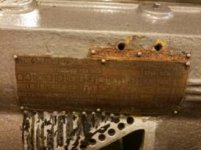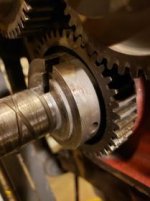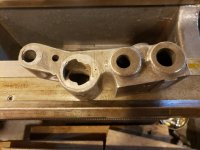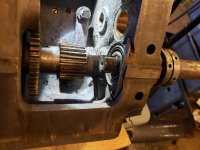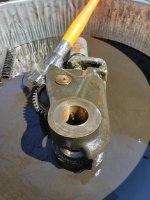mmurphy001
Plastic
- Joined
- Oct 10, 2015
- Location
- KCMO
A few years ago, I bought this lathe and used it a little but never had a chance to really do much with it. I’m now building out a hobby machine shop and figured it was time to get this guy in shape.
History of the lathe as far as I know it.
It has a metal tag showing it came from Mid-West Machine tools & supply company in Davenport Iowa. I bought it from the owner of a former machine shop in Port Byron Ill which is about 20 miles from Davenport. The person I bought it from was the employee of and later owner of the machine shop from the original owner. Which makes me the second or third owner depending on how you look at it. I will reference it as the third owner for clarity. Owner #2 said this lathe was the “personal” lathe of owner #1. Nobody used it except for him. That comment makes me think that what I call owner #1 really was the original owner – the math works out anyway. So the story goes that after #2 bought the machine shop he delegated this lathe to be the “casting” machine since it was so heavy and rigid. By Casting machine, I mean it was the lathe to turn rough cast iron. Apparently, sometime during history someone kept bugging #2 to sell him this lathe. I don’t remember the details but to keep him quiet owner #2 moved this lathe to his home. I believe it was used there but not a lot. When I bought it 5 years ago #2 said it had been at his home for 25 years.
Here’s a couple pics of it the day I got it home. Sorry for the bad pictures. My phone at the time had a cracked and foggy camera lens.


History of the lathe as far as I know it.
It has a metal tag showing it came from Mid-West Machine tools & supply company in Davenport Iowa. I bought it from the owner of a former machine shop in Port Byron Ill which is about 20 miles from Davenport. The person I bought it from was the employee of and later owner of the machine shop from the original owner. Which makes me the second or third owner depending on how you look at it. I will reference it as the third owner for clarity. Owner #2 said this lathe was the “personal” lathe of owner #1. Nobody used it except for him. That comment makes me think that what I call owner #1 really was the original owner – the math works out anyway. So the story goes that after #2 bought the machine shop he delegated this lathe to be the “casting” machine since it was so heavy and rigid. By Casting machine, I mean it was the lathe to turn rough cast iron. Apparently, sometime during history someone kept bugging #2 to sell him this lathe. I don’t remember the details but to keep him quiet owner #2 moved this lathe to his home. I believe it was used there but not a lot. When I bought it 5 years ago #2 said it had been at his home for 25 years.
Here’s a couple pics of it the day I got it home. Sorry for the bad pictures. My phone at the time had a cracked and foggy camera lens.






